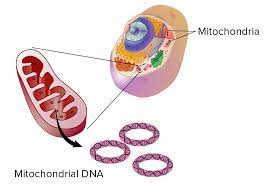Question
The first iron ore deposits in rocks appeared about 1.8 billion years ago. What took place to make this occur?
A. Some prokaryotic organisms began to absorb carbon dioxide from seawater.
B. Some eukaryotic organisms began to absorb carbon dioxide from seawater.
C. Some prokaryotic organisms began to release oxygen into seawater.
D. Some eukaryotic organisms began to release oxygen into seawater.
▶️Answer/Explanation
Ans:C
What is evidence for the endosymbiotic theory?
A. RNA can catalyse metabolic reactions.
B. Meteorites contain organic molecules.
C. Amino acids can be synthesized from inorganic compounds.
D. Mitochondria possess their own DNA.
▶️Answer/Explanation
Markscheme
D

Endosymbiosis is simply a organism living within another organism with a symbiotic relationship. Mitochondria provides energy at a cellular level and reproduce within your cells. Their numbers map to cell health, athletic ability and aging. Strenuous exercise promotes their numbers. Mitochondrial DNA has limited yet very important role in transcribing crucial proteins involved in oxidative phosphorylation reactions. Mitochondrial DNA contains 37 genes, all of which are essential for normal mitochondrial function. Thirteen of these genes provide instructions for making enzymes involved in oxidative phosphorylation. The remaining 24 genes are involved in the creation of transfer RNA (tRNA) and ribosomal RNA (rRNA) which help to turn amino acids into proteins. The important thing about their DNA is that mitochondria are only passed from the mother to children. They are too big and heavy for sperm to carry about. Thus, geneticists can use mitochondrial DNA to trace the maternal linkage.
Question
Pasteur used swan-necked flasks and a nutrient broth to demonstrate that spontaneous generation
of organisms does not occur on Earth. Some students performed a similar experiment using two
swan-necked flasks, one containing broth which had been previously boiled and another containing
broth which had not been boiled.
The flasks were left in the school laboratory and observed after one week. What is the evidence
against the spontaneous generation theory?
A. Microorganisms died in flask F due to high temperatures.
B. No microorganisms grew in either flask.
C. Microorganisms grew in flask G.
D. No microorganisms grew in flask F but many grew in flask G.
▶️Answer/Explanation
Ans: D
The correct answer is D) No microorganisms grew in flask F but many grew in flask G. This is evidence against the spontaneous generation theory as it shows that microorganisms do not arise spontaneously but come from pre-existing microorganisms. This is because the experiment was designed to prevent microorganisms from entering the flasks, and the only difference between the two flasks was that one was exposed to air and the other was not. The fact that microorganisms only grew in the flask that was exposed to air suggests that the microorganisms came from the air, rather than spontaneously generating within the flask. This supports the theory of biogenesis, which states that living things come only from other living things.